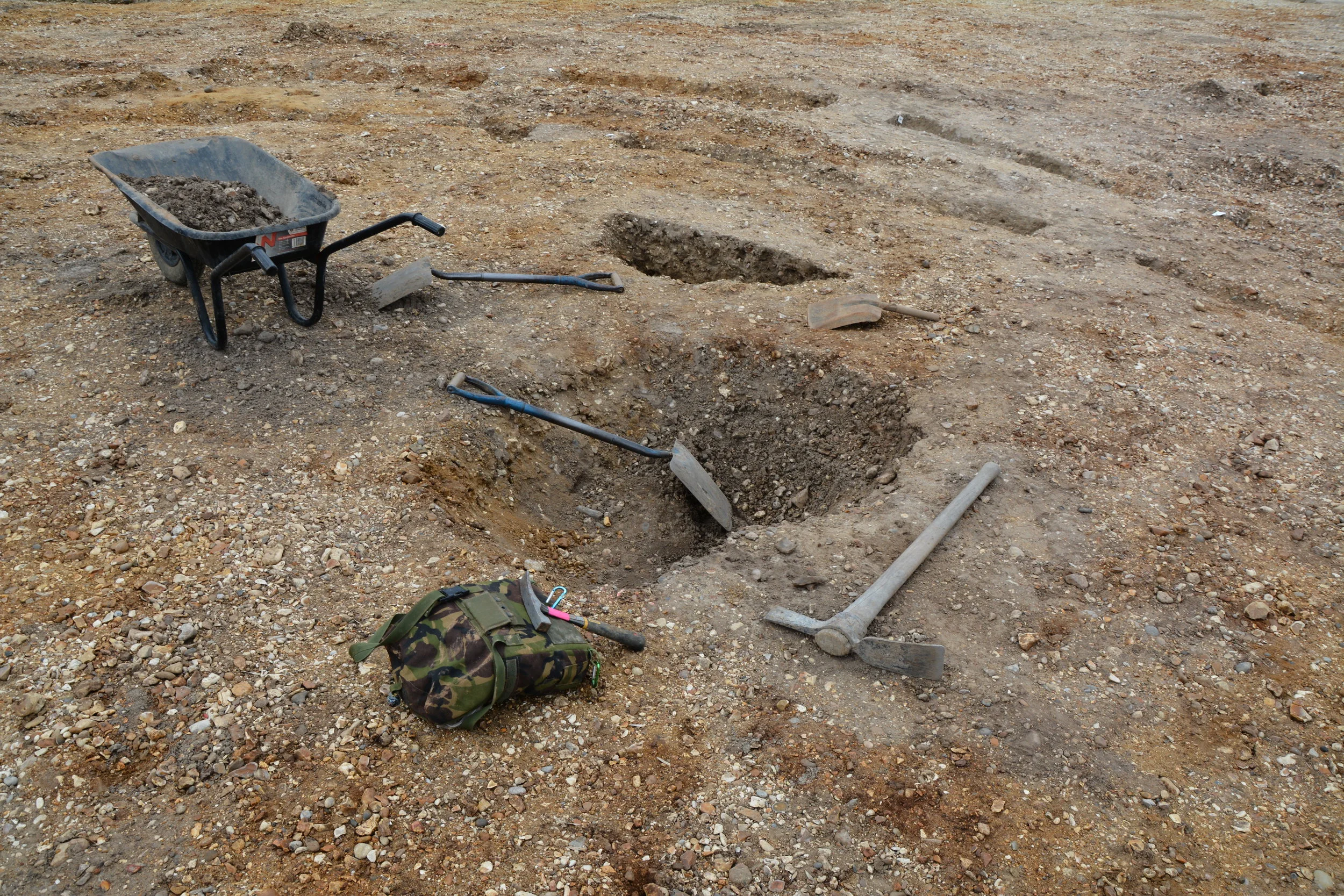Hatch Farm Dairies, Winnersh, Reading
Clients: Persimmon Homes Thames Valley & Bovis Homes Thames Valley Region
Proposal: Mixed-use development
The c. 50ha site was located immediately to the southwest of Winnersh, between Wokingham to the southeast and Reading to the west, just to the north of the M4. The 2007 evaluations identified Iron Age and Romano-British remains on higher ground in the central eastern sector of the site. Further trenching was undertaken in 2015 across the remaining areas of the site and further remains of these periods were identified close to the earlier evaluation trenches. Across the wider site a network of large boundary ditches of likely post-medieval origin were recorded, with many having remained in use until relatively recently, evidenced by pipework in the extended bases of a number of the ditches.
Following the Phase 2 evaluations, six areas were identified for mitigation excavation along with further strip, map and sample areas. The main focus of the excavations, and by far the most interesting archaeologically, was the previously identified habitation evidence dating to the Late Iron Age and earlier Romano-British periods, first seen in the 2007 trenches and extended spatially following the 2015 trenching.
The excavations revealed a number of ring ditches, the remains of former round huts. One, found in the south of the site comprised a double-ditch within a rectangular enclosure which included a line of post and stakeholes which would have represented a fence or palisade. We have interpreted this as the ‘big house’, so to speak – the residence of a higher status individual or family. A plan of the habitation site is available here.
Towards the end of the excavations, Armour Heritage along with our sub-contractors for this stage of works, Thames Valley Archaeological Services, curated a public open day. Around 260 visitors attended and were given the opportunity to see the ongoing excavation of features, chat to the teams from AH and TVAS, and to view and handle some of the many finds excavated over the course of the fieldwork.
Throughout the various stages of the site work, which continued for some 9 months, Armour Heritage managed and monitored all works, liaising with clients, sub-contractors and curators to ensure that all works were completed to what was a fairly tight and constantly changing schedule.
Return to Case Studies.
